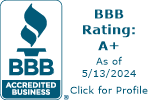Financial Spring Cleaning: Organizing Your Finances for a Secure Future!

As the seasons change and spring approaches, it’s not just our homes that could benefit from a thorough cleaning and organization – our finances could use some attention too.
Just as de-cluttering our living spaces can bring clarity and peace of mind, tidying up our finances can pave the way for a more secure future!
In this blog post, I’ll provide some informational resources and actionable tips for conducting a financial “spring cleaning,” ensuring that your financial house is in order and ready for whatever the future may hold.
*Disclaimer: I am not a personal finance professional. I am a retired reference librarian providing vetted and credible informational websites for your preview. Consult with a fiduciary personal finance advisor for professional insight and advice.

Assessing Your Financial Situation:
1. Reviewing Income and Expenses: Start by examining your income sources and monthly expenses. Look for areas where you can potentially reduce spending or increase savings.
- Websites like Mint.com can help you track your expenses and identify areas for improvement.
2. Evaluating Debt Obligations: Take stock of your existing debts, including credit card balances, loans, and mortgages. Explore strategies for debt reduction or consolidation to ease financial burdens.
- Websites like NerdWallet.com offer tools and resources for managing debt effectively.
3. Checking Credit Reports: It’s essential to review your credit reports for errors or discrepancies that could impact your credit score.
- Websites like AnnualCreditReport.com provide free access to your credit reports from the three major credit bureaus, allowing you to ensure the accuracy of your credit history.

Organizing Financial Documents and Records: 1. Establishing a Filing System: Set up a comprehensive filing system for financial documents, including tax returns, bank statements, investment statements, insurance policies, and estate planning documents. Websites like Investopedia offers tips on organizing financial paperwork effectively. 2. Digitizing Documents: Consider digitizing important financial records using secure cloud storage or digital filing systems. This ensures easy access and protection against loss or damage. Websites like Dropbox or Google Drive offer secure cloud storage solutions. 3. Creating a Financial Calendar: Develop a financial calendar to track important dates and deadlines, such as bill payments, tax filings, insurance renewals, and retirement account contributions. Websites like Calendar.com offer tools for creating and managing personalized calendars. |
Setting Financial Goals and Creating a Plan:
1. Identifying Short-term and Long-term Goals: Define your financial goals, whether it’s building an emergency fund, saving for retirement, purchasing a home, or funding education expenses.
SMART goal-setting principles can help you create actionable and achievable objectives.
2. Developing a Budget: Create a realistic budget that aligns with your financial goals and priorities. Track your spending and make adjustments as needed to stay on track.
Budgeting apps like YNAB (You Need a Budget) or EveryDollar can help you manage your finances effectively
3. Seeking Professional Guidance: Consider consulting with a financial advisor or planner to review your financial goals, assess your risk tolerance, and develop a customized financial plan tailored to your needs and circumstances.
Websites like the National Association of Personal Financial Advisors (NAPFA) can help you find a qualified advisor in your area.

By following these steps and incorporating them into your financial spring cleaning routine, you can take control of your finances and lay the groundwork for a more secure and prosperous future, and also a more balanced and abundant life!



